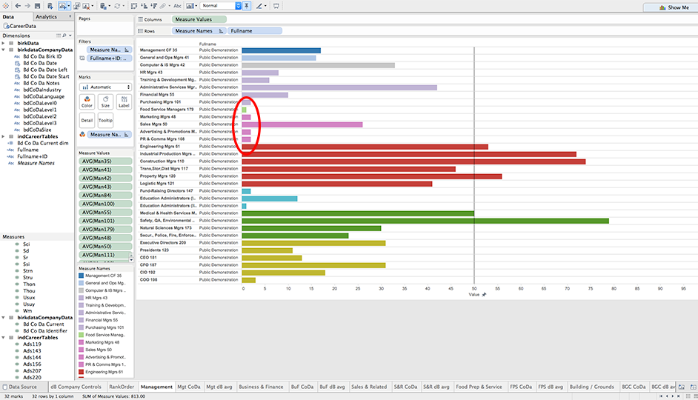
Check your blind spots!
I’ve told this story before, but it is apposite. In his early 80s, my father (who went on until just past his 98th birthday), started to develop holes in his retinas (macular degeneration).
Now, you might expect that this would mean that you would develop, say, a couple of interlocking dark spots in the middle of your field of vision. Apparently not. The brain, like nature, abhors a vacuum, and so it does a kind of ‘cut and paste to fill’ action; whatever is just out of focus and off centre in your field of view, gets copied and pasted across the gaps.
The first inkling I had of this was when driving with him. I was in the front passenger seat, and watched as a truckload of steel pipe missed coming in through the front windscreen by about 8 inches. “Wow, that was a bit close, Dad!” “What was?”, he replied.
A week or so later we were on the farm when he went down into the edge of the bush to ring-bark a radiata that was running amok. My Mum found him, weeping with frustration: he knew he was where the pine tree was, but he simply couldn’t see it. The more he looked where he knew it to be, the less he could see of it. It had vanished on him.
Now you may have 20:20 vision, and long may it last. But what about your organisational and business perceptions? Any blind spots there? How about your colleagues, especially the ones in mission critical roles?
Here’s the funny thing. If you look at the Tableau screen shot below, showing some role matching data from The Birkman Method dataset, the longer bars - probably even 30 and above - aren’t telling you that a person can do a particular role; simply that if they had to, they have - to some extent or other - similar perceptions and motivations to those who are successful and satisfied in those roles. In other words, they might be surprised by the extent to which they could ‘get it’.

But it is the really low matches that hold the greatest interest. Consider the GM above. Their best matches to managerial roles are the more ‘hard edged’ production and construction roles, but that doesn’t mean they can’t take on other management roles. But there are some significant blind spots. They score 2/99 on matches against Marketing Manager, A&P Manager and PR & Comms Manager (short pink bars, circled in red). How is that going to play out?
Well, firstly this is a successful professional manager, so they aren’t stupid. They know Marketing is an important part of the business cycle, so they will not say anything remotely like “Marketing doesn’t matter”. It will be far more subtle than that.
This is a blind spot. They may, for example, say things like “It is a bit too early to bring in Marketing yet, let’s get the new product spec nailed first…” What does that mean? Actually it means that, because they lack the perspectives that a ‘native’ Marketeer is likely to have, they both underestimate the complexity of what Marketing needs to do around a new product launch and the time that requires; and they undervalue the real contribution Marketing could be making in the product development phase. When they think everything is ready (meaning: everything they can see or care about), they will happily hand it over to Marketing - and then wonder why Marketing are making all kinds of excuses to cover themselves. The GM isn’t being malicious; they just can’t see what they don’t see.
The above is a real example, but it could just as easily be a Marketeer with super low scores on Engineering or Design, or whatever. The question is, what is it that you just can’t see? Once you know, you can start to make allowances. Until that time, you just don’t know: are you about to drive into the back of a truck? Or is there a six-foot wide tree smack bang in front of you that you just can’t find?
Might be time to check those blind spots.
Originally posted on LinkedIn - Published May 13, 2016
